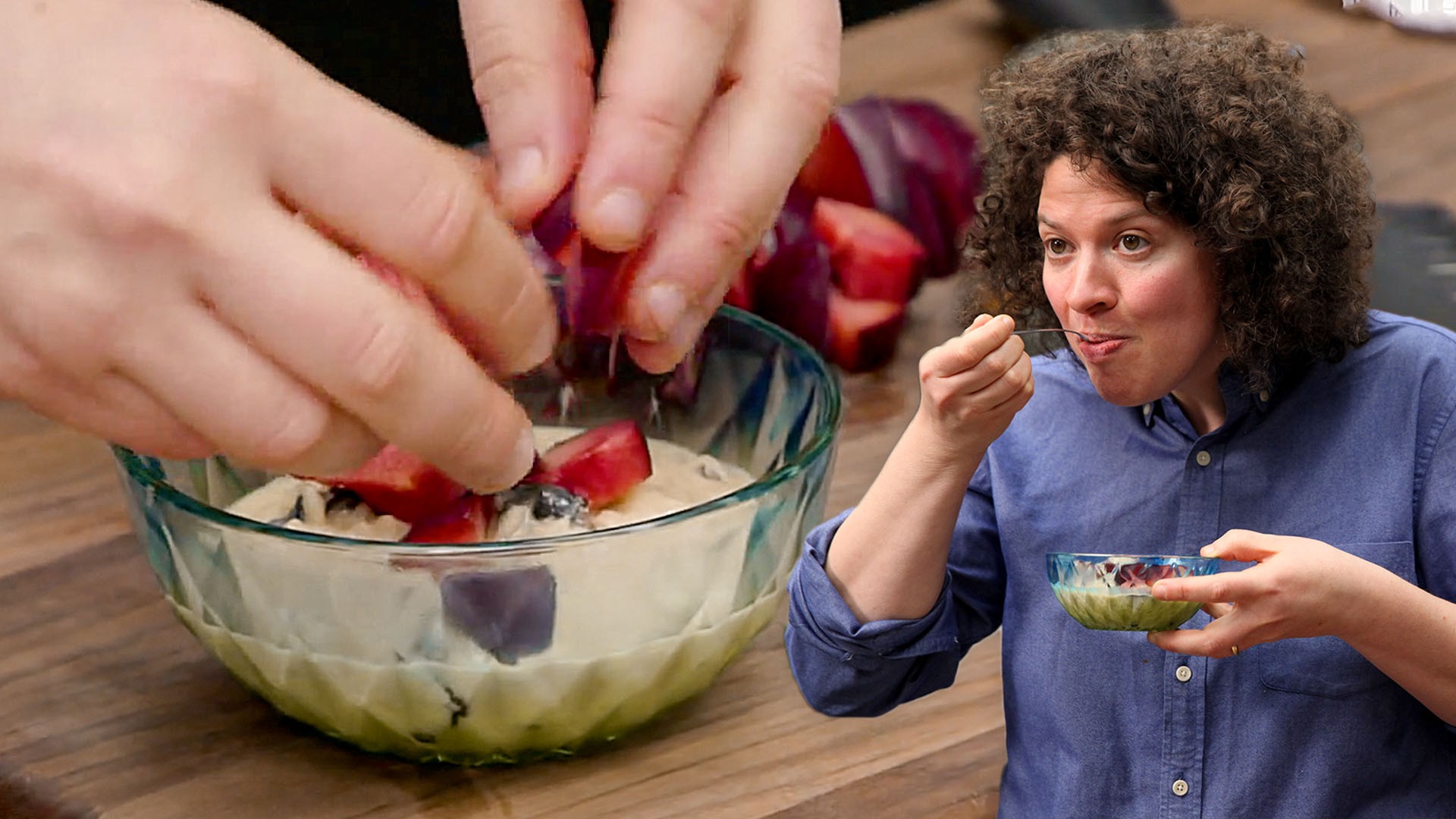Dip your spoon in to Om Ali—a golden, bread pudding-like dessert, lush and creamy with warm milk, and studded with golden raisins and pistachios—in any restaurant or cafe in Doha, Qatar, and you might not stop to think anything besides this is possibly one of the best desserts in existence. The recipe could not be more simple, nor more perfect. Puff pastry, milk, sugar, cream, and a smattering of nuts and raisins and/or other dried fruits are thrown into an oven and served golden brown.
Advertisement
Qatar, one of the smallest countries of the Gulf States, shares dessert traditions with the rest of the Arabic countries of the region. Even as the country of Qatar rushes headlong into futuristic green energy architecture and planning, this ancient dessert hailing from lower Egypt can be found at cafes and fancy hotels. Q-explorer Qatari guide Abdullah Mohammed told me “you can even eat it for breakfast.”But, like many famous dishes, the conception of the recipe is hotly disputed—and uncovering the over-the-top true crime element of one of the three competing origin stories is a real thrill ride. All three stories refer back to the name of the dish—“mother” (om) of Ali, her son. (Thanks to the patriarchy, the woman who created the dessert never gets her full name written down in the annals of history.) One tale follows a humble path of an old lady (who happens to have a son named Ali) in a poor village in the Nile Delta, where a sultan in the 13th century with obvious imperiousness asked for something to eat when he passed through this particular village while on a hunt. Scrambling for something worthy of a sultan, the old lady mixed together whatever she had on hand, and the sultan found it as melt-in-the-mouth delicious as the current day versions, and made it famous upon his return to the city—naming it after the mother of Ali.
One tale follows a humble path of an old lady (who happens to have a son named Ali) in a poor village in the Nile Delta, where a sultan in the 13th century with obvious imperiousness asked for something to eat when he passed through this particular village while on a hunt. Scrambling for something worthy of a sultan, the old lady mixed together whatever she had on hand, and the sultan found it as melt-in-the-mouth delicious as the current day versions, and made it famous upon his return to the city—naming it after the mother of Ali.

When she allegedly murdered her second husband for taking another wife, his first wife—the purported Om Ali of dessert fame, who was thrown over at Al-Durr's behest—allegedly bribed some maids to murder her in the hammam by beating her to death with their shoes.
Advertisement
A more Ceirsei Lannister-bent story, with more windy plot twists than an episode of Game of Thrones, also lays claim to the dessert's origin story: Life and death stakes combined with a Great British Bake Off turn.Shajarat Al-Durr (a Syrian chronicler calls her "the most cunning women of her age") began her path to power first as a bonded slave who married a sultan after giving him a son, and when he died, she ruled in his stead. However, due to a very complicated political situation, she ended up needing to remarry, and lost the official seat of power because the powers that be would not accept a female ruler. But she already had a taste for head-of-state matters, and was reputed to be pulling the strings behind the facade of her second husband.When she allegedly murdered her second husband for taking another wife, his first wife—the purported Om Ali of dessert fame, who was thrown over at Al-Durr's behest—allegedly bribed some maids to murder her in the hammam by beating her to death with their shoes. (It's unclear whether the shoes were part of the instructions or that was a spontaneous method of murdering.)Another account says that Al-Durr met an ignominious death by being thrown off the top of the citadel by the first wife, who had been waiting for her sweet, sweet revenge. (When you play the Game of Thrones…)Upon the jubilant news that her rival was dead, the first wife demanded her cooks compete to create a dish celebrating her rival's death, and to be even more extra, she even served it in with a gold coin in the bowl.
Advertisement
It should be noted that this story shows up only through gleeful tales around the dish and not in official historical accounts, which could be largely due to the fact many official history books were kept by men—maybe they didn't care about the bread pudding-like dessert aspect.Navigating lore and history gets a bit "turtles all the way down," but Al-Durr may have been discredited in the aftermath after she lost her power as a sort of reputational smear campaign that King Richard III also suffered.Lastly, removed from political intrigue and murder, is a story about an Irishwoman. Yes, indeed a dessert dish commonly served in the Middle East could possibly involve an Irish mistress. An Irish nurse with the family name O'Malley caught the eye of the ruler, Khedive Ismail who was the Khedive of Egypt and Sudan from 1863 to 1879. Khedive Ismail had a dessert created especially for her called O'Malley, which, some say, could have been bastardized into Om Ali by Arabic speakers.
Photo by the author
There's a reason this recipe hasn't been really changed since antiquity—though you might substitute croissants for puff pastry or the Egyptian flatbread called roaa, and these days we use more whipped cream than the rich gamoussa (buffalo) milk, the basics stay the same. Fluffy milky concoction short circuits the brain's pleasure centers (but hopefully does not inspire murder).So let us, on the whole, thank rich powerful people for one thing: commissioning very tasty desserts that live on today.